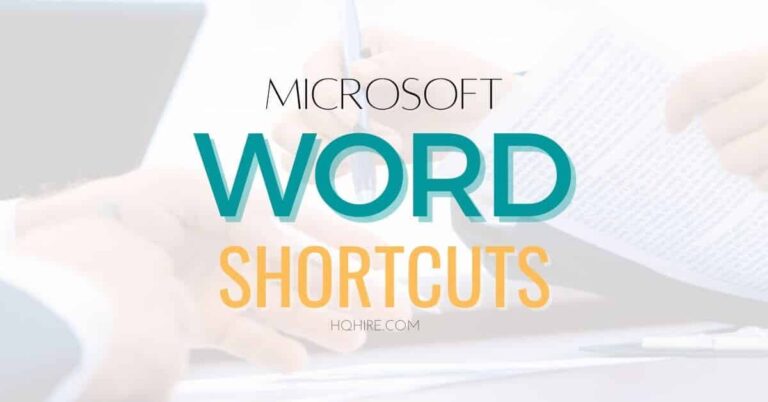Handling conflicts is a crucial skill in any workplace. Interviewers often ask about your conflict resolution abilities to gauge how you’d manage tricky situations on the job. They want to know if you can keep a cool head and find solutions when tensions rise.
To answer this question effectively, focus on describing a step-by-step approach to conflict mediation.
Talk about listening to both sides, staying neutral, and working together to find a solution that satisfies everyone. You can also mention a specific example from your past experience to show how you’ve successfully resolved conflicts.

Here, you want to show that you’re a problem-solver who can turn conflicts into opportunities for growth and improvement.
By demonstrating your ability to handle disagreements diplomatically, you’ll impress potential employers and increase your chances of landing the job.
Key Takeaways
- Show you can stay calm and objective when mediating conflicts
- Describe a step-by-step approach to resolving disagreements
- Use a real-life example to demonstrate your conflict resolution skills
Why Employers Ask “How Do You Mediate a Conflict?”
Employers care about your conflict resolution skills. They want to know if you can handle tough situations at work. Conflict is normal in any workplace. How you handle it matters a lot. Good mediators can turn conflicts into chances for growth. Employers look for team players. They want people who can work well with others, even when things get tough.
Your conflict mediation skills can:
- Improve team morale
- Boost productivity
- Create a better work environment
Your answer shows how you deal with problems. It tells them about your people skills and emotional intelligence.
When you answer this question, you show your:
- Communication skills
- Problem-solving ability
- Leadership potential
Employers also want to see if you fit their company culture. Your approach to conflict should match their values and make a positive impact at work.
Common Variations of “How Do You Mediate a Conflict?”

Interviewers may ask about conflict mediation in different ways. Here are some common variations you might encounter:
- “How do you handle disagreements between team members?”
- “Tell me about a time you resolved a dispute at work.”
- “What’s your approach to dealing with workplace conflicts?”
These questions aim to assess your conflict resolution skills. Employers want to know you can handle tricky situations calmly and professionally.
Other versions you might hear include:
- “How would you address a conflict between two colleagues?”
- “Describe your process for mediating disputes.”
- “What strategies do you use to defuse tense situations?”
When preparing your answer, think of specific examples from your past experiences. This will help you respond confidently, no matter how the question is phrased.
- Stay neutral
- Listen to all sides
- Find common ground
- Guide people towards a solution
Keep in mind that your ability to mediate conflicts is a valuable skill in any workplace. Your response can showcase your leadership and problem-solving abilities.
How to Answer “How Do You Mediate a Conflict?”

Mediating conflicts is a crucial skill in any workplace. This guide will help you craft a strong answer to show your ability to handle disagreements effectively.
Step 1: Talk About The Importance of Listening
Start by emphasizing the importance of listening. You should explain that you give each party a chance to share their perspective without interruption. This shows you value everyone’s input and want to understand the full picture.
Mention that you pay attention to both verbal and non-verbal cues. This helps you grasp underlying emotions and concerns that might not be expressed directly.
Highlight your use of active listening techniques. These include nodding, maintaining eye contact, and asking clarifying questions. These actions demonstrate your engagement and commitment to resolving the issue.
Step 2: Look into The Root Cause
Describe how you identify the root cause of the conflict. Explain that you ask open-ended questions to dig deeper into the issue. This approach helps uncover hidden problems that might be fueling the disagreement.
Share an example of how you’ve used this technique in the past. Maybe you discovered a miscommunication was at the heart of a seemingly complex problem.
Stress the importance of remaining neutral during this process. Your goal is to understand, not judge or take sides.
Step 3: Opt for Open Communication
Talk about how you encourage open communication between the conflicting parties. Explain that you create a safe space for honest dialogue. This might involve setting ground rules for respectful conversation.
Mention that you guide the discussion to focus on facts rather than emotions. This helps keep the conversation productive and solution-oriented.
Highlight your role in facilitating this exchange. You might act as a moderator, ensuring everyone gets a chance to speak and be heard.
Step 4: Get to a Win-Win Outcome
Discuss how you work with both parties to find a solution. Explain that you brainstorm ideas together, encouraging creativity and collaboration.
Emphasize your focus on finding a win-win outcome. This shows your commitment to resolving the conflict in a way that benefits everyone involved.
Mention how you help evaluate potential solutions. You might create a pros and cons list or use a decision matrix to assess each option objectively.
Step 5: Implementation and Action
Describe how you implement the chosen solution and follow up. Explain that you create an action plan with clear steps and responsibilities.
Stress the importance of checking in regularly to ensure the solution is working. This shows your commitment to long-term resolution, not just quick fixes.
Mention how you use these follow-ups to make adjustments if needed. This demonstrates your flexibility and dedication to finding the best possible outcome.
Best Example Answers to “How Do You Mediate a Conflict?”

Effective conflict mediation requires empathy, clear communication, and a solution-oriented mindset. Here are some strong example answers tailored to different career stages and situations.
Example Answer for a Recent Graduate
“As a recent graduate, I’ve practiced conflict mediation in group projects and internships. I start by listening to both sides without judgment. Then, I help identify common ground and shared goals.
I encourage open dialogue and brainstorming to find solutions that work for everyone. In my last internship, two team members disagreed on project priorities. I facilitated a discussion where we created a timeline that addressed both concerns.
My approach focuses on turning conflicts into opportunities for growth and better teamwork. I believe in staying calm and professional throughout the process.”
Example Answer for an Experienced Candidate
“With ten years in customer service, I’ve developed a strong approach to conflict mediation. I always start by actively listening to understand each person’s perspective.
Next, I summarize the main points to ensure everyone feels heard. I then guide the conversation towards finding a mutually beneficial solution.
In a recent situation, two colleagues disagreed on a marketing strategy. I organized a meeting where we listed pros and cons of each approach. This led to a compromise that combined the best elements of both ideas.
I also follow up after conflicts to ensure the solution is working and to prevent future issues. My goal is always to strengthen relationships and improve team dynamics through conflict resolution.”
Example Answer for Applying for a Leadership Position
“As a leader, I see conflict mediation as a crucial skill. I’ve developed a framework that consistently yields positive outcomes.
First, I create a safe space for open dialogue. I set ground rules for respectful communication and ensure each party has equal time to speak.
Then, I guide the discussion to identify the root causes of the conflict. Often, misunderstandings or different priorities are at the core.
Next, we collaboratively brainstorm solutions. I encourage creativity and compromise. Once we agree on a path forward, I clearly outline action steps and responsibilities.
Finally, I schedule follow-ups to monitor progress and make adjustments if needed. This approach has helped me transform conflicts into opportunities for team growth and innovation.”
Example Answer for an Industry Change
“While changing industries, I’ve found that conflict mediation skills are universally valuable. In my previous role in retail, I often mediated between customers and staff.
I start by acknowledging emotions without taking sides. Then, I focus on facts and finding common ground. I ask open-ended questions to encourage productive dialogue.
For example, I once mediated between a dissatisfied customer and a stressed employee. By calmly discussing the situation, we uncovered a miscommunication about product features. We then worked together to find a solution that satisfied everyone.
I’m excited to apply these skills in a new industry context. I believe my fresh perspective, combined with my conflict resolution experience, will be an asset to your team.”
Example Answer for a Career Change
“In my previous career as a teacher, I regularly mediated conflicts between students. These skills will translate well to a business environment.
My approach starts with active listening. I make sure each party feels heard and understood. Then, I help identify the core issues behind the conflict.
Next, I guide the conversation towards finding common goals. This shifts the focus from blame to problem-solving. I encourage brainstorming and collaboration to find solutions that work for everyone.
For instance, I once mediated a dispute between two student groups over shared resources. By facilitating open discussion, we created a fair schedule that met everyone’s needs.
I’m eager to apply these skills in a corporate setting, helping teams work together more effectively.”
Join over 11,000+ achievers who are committed to achieving their career goals!






